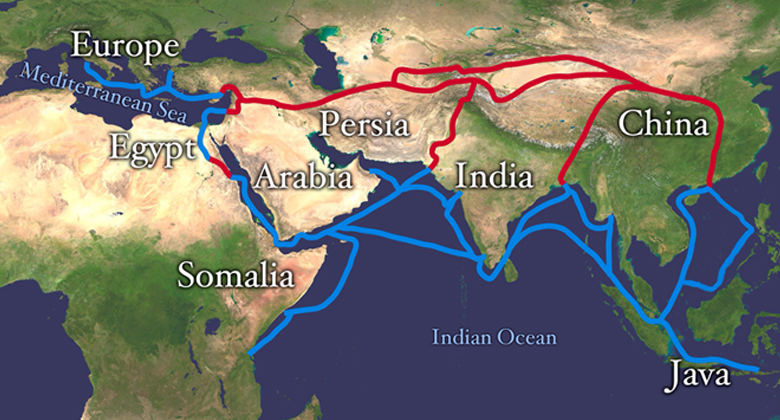
The Indian vibe of ethnic fashion is incomplete without silk sarees. Other regional name of silk in eastern and northern India is Resham and Southern India is Pattu. Different types and designs of silk sarees are made everyday by many brands to fulfill a lady's desire of presenting herself in the best ethnic outfit to the society, specially to her loved one.
So, let's take a moment to turn few pages in the history and try to get a bit closer to our traditional roots of ethnic fashion. The legacy that we are proudly carrying forward for many years, started near about in 2450 BC, the Indus Valley Civilization.
The Myth
The great Confucius's writings have the story of the beginning. It says, a silk worm's cocoon fell into the tea cup of the empress, Leizu. To extract it from her drink, a 14 year old girl began to unroll the thread of the cocoon. Then came the idea of weaving this thread and the rest is history. The Chinese became the first to start silk production in 3630 BC.
The Silk Road
The Silk Road was a significant factor in the civilizations of China, India, Ancient Egypt, Persia, Arabia, and Ancient Rome. Scholars believe that starting in the 2nd century BC the Chinese established a commercial network of exporting silk to the West. The Persian court and its king, Darius III, used silk, when Alexander the Great conquered the empire.
The Royal Touch in India
It entered India from China, through the famous and most discussed, silk road. The art of silk weaving got into better standards in the country when Akbar, in 1572 AD brought together all skilled weavers in the royal workshop from different parts of the country as well as from abroad like Persia, Syria, Turkey etc, to show their skills and expertise. He then took an extra initiative to develop famous weaving centers in cities like Lahore, Agra, Multan, Fatehpur Sikri and many more. The silk of Punjab became world famous that time. Lahore and Multan became the hub of silk industry, the tradition continues.
In India, the states of Karnataka, Jammu and Kashmir, West Bengal, Andhra Pradesh and Tamil Nadu produces around 97% of raw silk. In ancient times, the weaving centers were developed in and around the kingdom capitals and holy cities for the demand of expensive fabrics by the royal families and temples. Rich merchants of that time made valuable contributions in the development of these fabrics.
Later on various techniques and experiments of productions gave birth to different type of silks, some of which became popular with the city's name, where it was first manufactured. Some famous silks of recent times are Ghicha, Tussar, Khadi, Arni, Assam, Chanderi and many more.
